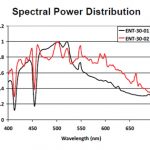If you’ve been reading my blog, The Complex, you may have caught that I’ve recently relocated to the city that never sleeps, New York. (And if you haven’t been reading my blog, along with the other great stuff on PLSN.com… get to it!)
The day that we got to our new apartment in Manhattan, I told my wife that one of the things I was going to make a point of seeing was the “Tribute in Light.” I did, and this month I’m going to reflect a little on one example of technology intertwining with humanity.
But first, a little background…
A Gap in the Skyline
In the week following September 11, 2001, the fall of the World Trade Center’s twin towers left a void in many peoples’ hearts. It also left a gaping void in the Manhattan skyline.
Within the next week, a set of artists had put forth a concept for a temporary memorial. Their vision was simple: Two high-intensity shafts of light would sit side-by-side, shining vertically into the ether in a ghostly remembrance of the towers that had stood for years as anchors to the cityscape. An emotional and evocative visual, the idea was met with almost instantaneous approval. Along with the conceptual artists, a team of architects and designers came together to solidify the plans and take the concept from sketches to preparations.
As the sun set on March 11, 2002, two shafts of light resolved in the sky above downtown, shooting toward the stars and bringing tears to the eyes of New Yorkers. The beams were visible for miles, slicing unerringly through the night, illuminating every particle in their path. Puffs of cloud lit up as if heaven were about to pour through.
For the next month, these luminous ghosts inhabited the night sky over New York. Since then, these “monuments” have been erected annually, filling that gap in the skyline for one night a year.
Technology for Humanity
It’s worth mentioning at this point that when this laser-like sculpture was eventually erected, it took a lot more equipment than two searchlights. The final plan actually made use of 88 DMX-controlled xenon fixtures made by Italy’s Space Cannon vH. The same model has been used every year since.
The two towers of light are each a perfect square consisting of 11 fixtures on each side. To align the beams perfectly, the designers turn on the power in the late night hours several days prior, meticulously adjusting each and every shaft of light. They view the 88 parallel beams from various views throughout the city, painstakingly tweaking the position of each. By dusk on September 11, they have erected their own towering twins — a pair of columns that appear to shoot into the sky without effort or limit.
Humanity from Technology
This year, on the afternoon of September 11, I set out for Ground Zero with my tripod and camera. I didn’t really know what I was expecting to see, nor did I know how I would feel about it. When I disembarked from the musty subway, I climbed up the steps into the refreshing city air. Expecting the faint smells of ash that I had experienced years ago, I was mildly surprised at the calm around me.
With the exception of a few extra uniformed police, the sidewalks were quiet. It was still an hour to dusk, but I had expected a few more people to be waiting for these lost structures to appear in the night sky. As I milled about and the sun began to sink, I found my way to a spot that I hoped would offer me an ideal view of the monoliths.
And then, slowly, the horizon consumed our closest star. As the cool light in the sky began to fade, a set of 88 phantasms slowly materialized before my eyes. As other city-dwellers began to appear around me, I moved slowly about the west side of this fleeting monument. The mood was somber, though not entirely sad. It was apparent that many had not expected to see again this haunting image that had graced the landscape for just five nights in the same number of years.
I was caught off guard by the stark photographs that appeared in our cameras. Wisps of clouds to our eyes became windows of light to our cameras. The cool beams of pure white light were transformed into blue neon laser beams when balanced in frame with the warm man-made colors lighting the surrounding streets and buildings.
The simplicity of the lines, planes, shapes and color was startling and beautiful. It touched me and everyone around me.
It’s nice to know technology doesn’t need to get in the way of humanity.
Phil Gilbert is a freelance lighting designer and programmer who has been transplanted to New York City. You can contact him at pgilbert@plsn.com.
